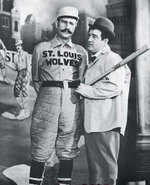Cast of Characters
Are you only bringing one thing to the table?
This picture is the cast of characters from my 8 year old son's latest creation, a comic book based on the Lego 'Power Miners'. What I found amusing about the page was the specific roles he has assigned to all the characters, and the descriptions he chose for each one.
For example on the good guy side we have 'Ace the Engineer', 'Brains the Scientist', and 'Tom the Reporter'. The villains have the expected sinister sounding names like 'Boulderax', 'Sulfurix', and 'Glaciator'.
Each character fits neatly into their assigned role, you know what to expect from them as the story progresses. Granted, 8 year olds (and most TV sitcom writers) usually haven't mastered the concept of complex character development. In this story, Glaciator will be evil throughout, and there is no way he will ever change.
What does this have to do with HR Technology? Well, nothing really.
But it does raise a question that almost all of us who are lucky enough to still be employed need to ask ourselves. That is, are we as one-dimensional and predictable as the characters in my son's comic? Are we only bringing one thing to the table? Even if that one thing that we do, we do fantastically well, it is still only one thing. When it comes time for the organization to decide who will be in the next group to be shown the door, if you can be so easily defined by your 'one thing', you are bound to be at more risk than a more fully developed character.
To use another analogy, when Kirk, Spock, Bones, and a random crewman beamed down to the hostile planet, it was pretty much a given that 'Crewman XYZ' was the one not coming back.
Do whatever you have to do to not be branded as a one-dimensional character like 'Glaciator' or 'Crewman XYZ'. Learn a new skill, badger some colleagues to let you in on a new project, connect with peers in your industry and start sharing knowledge and insight.
Don't be so easily defined.

 Steve
Steve


